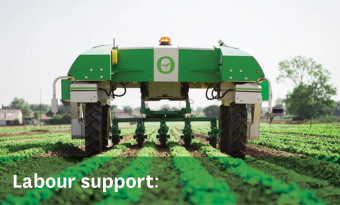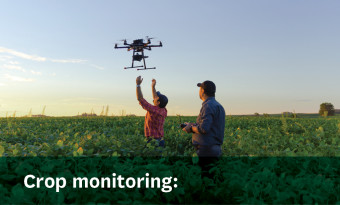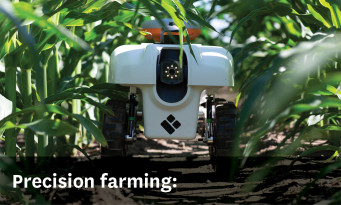How AI and Robotics will play a part in the future of horticulture
Artificial Intelligence (AI) might sound like something from science fiction, but it’s already making its way onto farms and orchards. From robot pickers to chatbots trained to offer farm advice, AI has the potential to have a major impact on how we grow, manage, and market our crops.
AI and robotics are already proving useful across the horticultural sector, especially in areas like:
 To support on-farm labour, robots are being developed to assist with harvesting, grading and packing. These technologies can help fill labour gaps, improve efficiency and maintain productivity when skilled workers are hard to find.
To support on-farm labour, robots are being developed to assist with harvesting, grading and packing. These technologies can help fill labour gaps, improve efficiency and maintain productivity when skilled workers are hard to find.
Real-World Benefits
For growers, the potential advantages of AI include time savings, improved consistency, and the ability to make more informed decisions. Automating repetitive tasks like spraying or monitoring allows more time to be spent on planning and problem-solving. At the same time, machines bring a level of consistency that can improve product quality, helping ensure that crops are cared for in a uniform way, regardless of the time of day or weather conditions. There’s also innovation happening after harvest, with systems being developed to scan produce for quality and ripeness.
Another advantage is the potential to reshape on-farm roles. With automation taking care of some of the manual workload, new positions are emerging, such as drone operators, data analysts, and sustainability coordinators. These shifts could help attract younger people to horticulture by making farm work more technology-focused and business-oriented.
 Drones and AI-powered cameras can analyse crop health, detect pests or diseases early, and even help fine-tune irrigation and fertiliser use.
Drones and AI-powered cameras can analyse crop health, detect pests or diseases early, and even help fine-tune irrigation and fertiliser use.
What to Watch Out for
Of course, adopting AI doesn’t come without its challenges. Trust is a big one. Many growers still prefer people over new technology, and for these tools to be truly helpful, it must be simple, reliable, and easy to use. Some tools still feel like they’ve been built by and for tech experts, not growers.
Cost is another barrier. While large operations might be able to invest in robotics and AI platforms, others may find the upfront expense hard to justify. Access to training and support will also be important as more data-based tools enter the market.
Then there’s the question of data itself, including how it’s collected, who owns it, and what it’s used for. As more devices are introduced to monitor crops, soil, and equipment, understanding how your information is being stored and shared
becomes essential.
 AI systems are being used to make smarter, data-driven decisions. Some tools interpret imagery to spot patterns a human eye might miss, such as early signs of nutrient deficiency or overwatering.
AI systems are being used to make smarter, data-driven decisions. Some tools interpret imagery to spot patterns a human eye might miss, such as early signs of nutrient deficiency or overwatering.
Looking ahead
AI and robotics are not about removing the need for experienced growers. In fact, it’s the combination of technology and intuition that is likely to deliver better results. AI has the potential to be a useful tool, helping growers fine tune their decisions, better allocate resources, forecast yield with more confidence, and take costs out of their operations.
Like any new tool, it will take time to find what works. But used well, AI could make horticulture more efficient, more sustainable, and better prepared for future challenges.
While there are still barriers to overcome, the direction of travel is clear and that is that technology will continue to play a growing role in how we farm, and the growers who adapt stand to benefit the most.